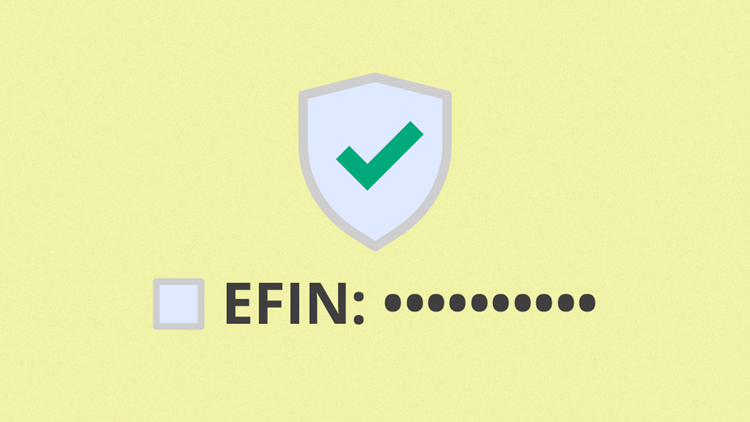by Ameritax | Dec 13, 2021 | Tax Tips and News
The Internal Revenue Service has updated its online information with the aim of helping individual taxpayers qualify for Economic Impact Payments (EIPs) if they didn’t already get one.
The agency says it has updated its frequently asked questions (FAQs) on the 2020 Recovery Rebate Credit, which is available for taxpayers who didn’t receive the full amounts in the first two rounds of the Economic Impact Payments.
The first and second rounds of EIPs—sent out in 2020 and early 2021—were advance payments of the Recovery Rebate Credit, claimed on a 2020 tax return.
Taxpayers who missed out on the first or second stimulus payment need to look over the new updated FAQs and see if the new information helps them determine their eligibility and if they need to claim the Recovery Rebate Credit for the 2020 tax year.
If the answer is yes, the taxpayer can either file a 2020 return if they have not filed yet; or they can file an amended return if they’ve already had a 2020 return filed and processed.
A word about reliance and FAQs
The IRS also makes a point to tell taxpayers not to rely too heavily on frequently asked questions when it comes to formal IRS actions such as Tax Court. Instead, the agency advises, FAQs are there to help taxpayers with general information—rather than case-by-case guidance. That, they say, should be found in the Internal Revenue Bulletin.
The Bulletin is the go-to source where official rulings and procedures of the IRS are announced. It also carries Department of the Treasury decisions, executive orders, tax conventions, legislation, and other tax items of interest.
Frequently asked questions, on the other hand, are a valuable resource because they can get things like tax changes before the public quickly.
The IRS recognizes this can put taxpayers in the middle, so the agency has decided that a taxpayer who relied on guidance of an FAQ—and their reliance was based on facts—won’t be penalized where there’s a reasonable cause standard for relief. This includes a negligence penalty or some other penalty involving accuracy where there’s an underpayment of tax.
For more on reliance, or the Recovery Rebate Credit, visit IRS.gov.
Sources: IR-2021-246; “General Overview of Taxpayer Reliance on Guidance Published in the Internal Revenue Bulletin and FAQs“
– Story provided by TaxingSubjects.com
by Ameritax | Dec 9, 2021 | Tax Tips and News
Tax professionals have been in the crosshairs of cybercriminals for some time now, and it’s only getting worse. Now, the crooks are casting their nets, not only for client data, but to snare vital data of the tax pros themselves.
The Internal Revenue Service says this newest group of targets include the tax professional’s Electronic Filing Identification Number, or EFIN.
This sets up a very scary scenario: If just one tax practitioner is compromised by a hacker or an identity thief, the effect is like tossing a rock into a pond. The initial impact may be thought to be small, but the resulting waves take in a lot of ground as they spread.
One tax office breach can lead to the theft of data for thousands of taxpayers.
Protect yourself from cybercriminals
One of the best ways to protect against illegal activity is actually very simple: Check your IRS e-Services account regularly, to see how many federal returns have been submitted using your EFIN. It’s a vital safeguard that shouldn’t be overlooked during tax season.
If the number of returns shown online doesn’t agree with the tax pro’s records—or if anything else seems suspicious—they should call the IRS e-help desk at 866-255-0654.
Tax pros who don’t already have an e-Services account can go online to e-Services on IRS.gov and register for one.
Beyond checking one’s EFIN, there are a number of “best practices” we should all be using to keep data secure. These include using strong anti-virus software, insisting on strong and unique passwords, and using two-factor authentication whenever possible.
But that’s not all:
- Learn to recognize and avoid phishing scams; do not open links or attachments from suspicious emails, most data thefts begin with a phishing email.
- Secure all devices with security software and let it automatically update.
- Use strong passwords of eight or more mixed characters; use phrases that are easily remembered, and password protect all wireless devices.
- Encrypt all sensitive files and emails and use strong password protections.
- Backup sensitive data to a safe and secure external source not connected fulltime to the network.
- Wipe clean or destroy old computer hard drives that contain sensitive data.
For more information on keeping EFINs secure, check out Publication 3112, IRS e-file Application and Participation; and Publication 1345, Handbook for Authorized IRS e-file Providers of Individual Income Tax Returns.
Source: Tax Tip 2021-182
– Story provided by TaxingSubjects.com
by Ameritax | Dec 9, 2021 | Tax Tips and News
While most Americans have their eyes firmly on the Christmas holidays, many US retirees have another milestone to consider.
While the holidays are the emotional favorite, they shouldn’t let the deadline slip by to make Required Minimum Distributions (RMDs) from their retirement plans and individual retirement accounts. That deadline is December 31.
RMDs are generally the minimum amounts that plan owners have to take out in a year, starting in the year they reach 72. Owners have the alternative to start RMDs the year they retire, if that’s later than 72.
If the retirement plan account is an IRA – or the account owner is at least a 5% owner of the business that sponsors the retirement plan – the account owner has only one choice: to withdraw the RMD starting the year they turn 72.
Taxpayers who reached 70 1/2 in 2019 – that is, those who tuned 70 on or before June 30, 2019 – didn’t have to take a Required Minimum Distribution for 2020, but they will have to take one for 2021. (More on this later.)
Those who reach 72 this year with their 70th birthday on or after July 1, 2019, have their first RMD due by April 1 of 2022.
Who has to take an RMD?
The rules for Required Minimum Distributions apply to:
- Owners of traditional Individual Retirement Arrangements (IRAs)
- Owners of traditional Simplified Employee Pension (SEP) IRAs
- Owners of Savings Incentive Match Plans for Employees (SIMPLE) IRAs
- Participants in various workplace retirement plans, including 401(k), Roth 401(k), 403(b) and 457(b) plans
The biggest excepted group to RMDs are taxpayers who participate in Roth IRAs, since those investments don’t require distributions while the original owner is still alive.
How do retirees find their RMD?
An IRA trustee or the plan administrator will notify the taxpayer who owns the account that an RMD must be taken, when, and how much to withdraw. This is done for each IRA the taxpayer owns. In the case of IRAs, the taxpayer with multiple accounts can take the RMD amounts for all their accounts from just one, satisfying the law for distributions.
Rules, however, are different for workplace retirement plans, where RMDs have to be taken from each account the taxpayer owns.
The penalty for not taking the distribution – or for not taking enough in a distribution – can be a real attention-getter: a 50% excise tax on the amount not distributed.
The RMD is figured using the taxpayer’s life expectancy and the account’s balance. Many trustees use Form 5498, IRA Contribution Information, to report the distribution to the account owner.
Most times, life expectancy is calculated using the Uniform Lifetime Table III in Publication 590-B, Distributions from IRAs.
The IRS also has online worksheets taxpayers can use at IRS.gov.
The coronavirus and 2020 distributions
Like just about everything else in American life, the COVID pandemic affected Required Minimum Distributions in 2020.
If an IRA owner or a beneficiary got an RMD during 2020, they had the option of returning the funds to their IRA or other qualified plan to avoid paying taxes on the distribution.
If a 2020 distribution could be qualified as a coronavirus-related distribution, it could be repaid over a three-year period or have taxes on the RMD spread over three years.
A 2020 distribution from an inherited IRA, however, faced a different set of rules, since those withdrawals weren’t allowed to be repaid. Taxpayers could, however, have the taxes on the RMD spread over a three-year period.
For frequently asked questions, forms, instructions and other tools, visit IRS.gov online.
There, find:
Source: IR-2021-245
– Story provided by TaxingSubjects.com
by Ameritax | Dec 7, 2021 | Tax Tips and News
New guidance is available for employers on the retroactive termination of the Employee Retention Credit.
The new information is contained in Notice 2021-65.
The reversal comes after passage of the Infrastructure Investment and Jobs Act on Nov. 15 of this year. The new law amended the language of the original Employee Retention Credit so that it now applies only to wages paid before Oct. 1, 2021. The only exception is for recovery startup firms.
Why was Employee Retention Credit guidance needed?
This new guidance applies to some employers who paid wages after Sept. 30 of this year and got an advance payment of the Employee Retention Credit.
These employers may also take the option to make reduced employment tax deposits ahead of getting the credit in the fourth quarter of the year. But there’s a problem: Thanks to the change in the law, the employers no longer qualify for the credit or the advance payments.
For those affected employers who got advance payments of the credit for fourth-quarter wages, the fix is simple. They can avoid failure-to-pay penalties as long as they repay the amounts by the due date on their employment tax returns.
What about those employers who chose to reduce their employment tax deposits?
In that case, if the deposits were reduced on or before Dec. 20, 2021, for wages paid in the fourth quarter of the year anticipating the Employee Retention Credit, the employer won’t face failure-to-deposit penalties if:
- The employer reduced deposits in anticipation of the Employee Retention Credit, consistent with the rules in Notice 2021-24;
- The employer deposits the amounts initially retained in anticipation of the Employee Retention Credit on or before the relevant due date for wages paid on Dec. 31, 2021 (regardless of whether the employer actually pays wages on that date). Deposit due dates will vary based on the deposit schedule of the employer, and;
- The employer reports the tax liability resulting from the termination of the employer’s Employee Retention Credit on the applicable employment tax return or schedule that includes the period from Oct. 1, 2021, through Dec. 31, 2021. Employers should refer to the instructions to the applicable employment tax return or schedule for additional information on how to report the tax liability.
It should be noted that while the various remedies mentioned can help employers escape failure-to-pay and failure-to-deposit penalties for taxes due on fourth-quarter wages in 2021, employers won’t avoid such penalties if they reduce deposits after Dec. 20.
Employers who get a notice of a penalty can reply with an explanation. The IRS says it will then consider issuing relief for reasonable cause.
Check out the IRS website at IRS.gov for more information on coronavirus-related relief measures for businesses.
Source: IR-2021-242
– Story provided by TaxingSubjects.com
by Ameritax | Dec 4, 2021 | Tax Tips and News
We’re not trying to be alarming, but if you’ve got a small business, there’s someone looking over your shoulder—and we’re not talking about the government.
They are, however, scammers and identity thieves, looking to use the business’ confidential information to file bogus tax returns. Their endgame is to steal inflated refunds in the name of their victims.
“Businesses, just like individuals and tax pros, need to stay alert,” said IRS Commissioner Chuck Rettig. “Thieves may steal enough information to file a business tax return or use other scams that involve the company or its employees.”
And unfortunately, it’s the “little guy” who gets hit the hardest. Of all the cyberattacks leveled at business targets, more than 70% were aimed at businesses with 100 or fewer employees.
Business identity information, employee identity data – even credit card and other payment information – all are fair game for cybercriminals. To hang on to their data, businesses are urged to use these best practices from the Federal Trade Commission:
- Set security software to update automatically,
- Back up important files,
- Require strong passwords for all devices,
- Encrypt devices and
- Use multi-factor authentication.
Remember to be alert for any possible scams that use COVID-19 as a premise to trick email recipients into clicking embedded links or opening attachments. These scams also surface around tax time using taxes as the cover instead of COVID.
While it may not be a direct defense of data, keeping a business’ EIN information up-to-date can be important for resolving data breaches or identity theft issues quickly.
Use Form 8822-B to report changes of address or responsible party. These changes must be reported to the IRS within 60 days of the change. Keeping this information current allows the IRS and the company to respond quickly to resolve data issues.
IRS does its part
The Internal Revenue Service has tightened up how it delivers information, making it harder for identity thieves to glean actionable data that can help them file fake returns.
The agency began masking sensitive data on business tax transcripts last year. Now, only financial entries are fully visible. The rest of the data in the transcript has various rules for what can be seen—or not.
The names of businesses and individuals, for example, are reduced to the first four letters of each first and last name; Employer Identification Numbers, on the other hand, are represented by only their last four digits.
If a business suspects it has been the target of possible identity theft, they should file Form 14039-B, Business Identity Theft Affidavit. This lets firms report possible tax-related identity or data theft quicker.
If a business receives any of the following examples, they should consider filing Form 14039-B:
- Rejection notice for an electronically filed return because a return already is on file for that same period.
- Notice about a tax return that the entity didn’t file.
- Notice about Forms W-2 filed with the Social Security Administration that the entity didn’t file.
- Notice of a balance due that is not owed.
Note, however, that Form 14039-B should not be filed if a business has a data breach but there’s no tax-related impact.
The IRS’ Identity Theft Central web pages have more information in their Business section.
This puts the wraps on National Tax Security Awareness Week and related alerts from the Security Summit, a partnership of the IRS, state taxing agencies and tax-industry partners. The Security Summit has been tasked with fighting identity theft – especially when it occurs as part of the income tax process.
For more information on security measures affecting America’s small businesses, check out the Federal Trade Commission’s Cybersecurity for Small Businesses web page.
Source: IR-2021-241
– Story provided by TaxingSubjects.com






 Ameritax
Ameritax